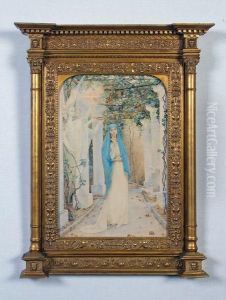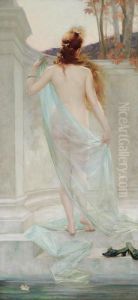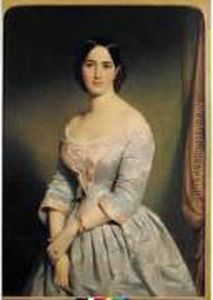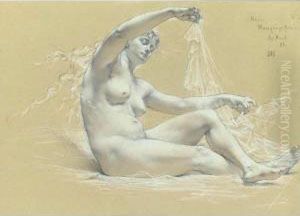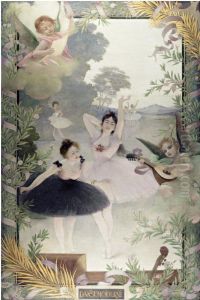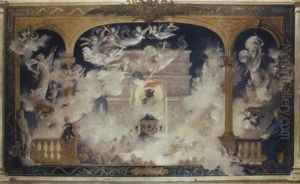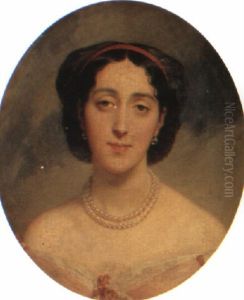Edouard-Marie-Guillaume Dubufe Paintings
Edouard-Marie-Guillaume Dubufe was a French painter born on March 31, 1819, in Paris. He came from a family of artists; his father, Claude-Marie Dubufe, was a painter as well, and his mother was the daughter of the architect Pierre-Joseph Garrez. Edouard Dubufe's early artistic training was under the guidance of his father, who was responsible for nurturing his talent from a young age.
In 1836, at the age of 17, Dubufe entered the École des Beaux-Arts in Paris, where he studied under Paul Delaroche, a prominent painter of the time. Delaroche's influence is evident in Dubufe's work, particularly in his mastery of the academic painting style and his focus on historical and mythological themes. Dubufe quickly made a name for himself as a portraitist and history painter.
Throughout his career, Dubufe exhibited his work at the Paris Salon, the official art exhibition of the Académie des Beaux-Arts in Paris. His paintings often depicted scenes from history, mythology, and religion, as well as portraits of the French elite. He was particularly known for his refined and elegant portrayal of female subjects. Dubufe's skillful use of light and his delicate brushwork were hallmarks of his portraits, which helped to establish his reputation in Parisian society.
During the Second Empire (1852–1870), under Napoleon III, Dubufe received numerous commissions for portraits and decorative works. His success allowed him to travel, and he spent some time in Italy, where he was inspired by the Renaissance masters. Dubufe's work was also part of the art movements of his time, reflecting the tastes and styles that were popular among the Parisian bourgeoisie.
In addition to his painting career, Dubufe was involved in the art community as a member of the Société des Artistes Français and as a teacher. He passed on his knowledge and techniques to the next generation of artists, including his own son, Guillaume Dubufe, who also became a successful painter.
Edouard-Marie-Guillaume Dubufe's career was marked by his dedication to the art of painting and his ability to capture the essence of his subjects with elegance and accuracy. He continued to paint and exhibit his work until his death on August 10, 1883, in Versailles. His legacy includes numerous portraits and historical scenes that provide insight into French art and society during the 19th century.

